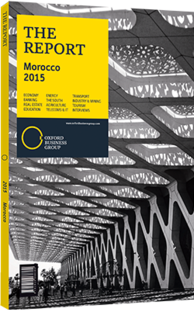Morocco uses targeted promotion to increase domestic tourism
A key component of Vision 2020, the national tourism strategy that aims to attract 20m visitors by the end of the decade, domestic tourists are now seen as one of Morocco’s most reliable source markets in the face of volatile foreign arrivals and uncertainty associated with current regional instability. One testament to this is the Ministry of Tourism’s latest figures, which show Moroccan tourists spent 5.3m nights in the country’s classified accommodations in 2014, up from 2.27m in 2000. This makes them the largest source market by this measure, accounting for a 27% share; authorities hope to raise this to 40% by 2020.
Promoting Domestic Tourism
One way of doing so is through targeted promotion. In 2003, a marketing campaign known as Kounouz Biladi was devised by the Moroccan National Tourism Office to raise awareness of the country’s offerings for domestic tourists. The campaign’s limited success, partly a result of low cultural awareness about local holiday options, prompted the idea of a travel card programme that might encourage more Moroccans to go on holiday. Currently in the planning stages, the scheme – only valid for holidays spent in-country – will provide a savings mechanism to which both employers and employees will contribute, bolstering tourists’ spending capacities, absorbing more people into formal accommodations and extending their length of stay.
Dedicated Infrastructure
Another area of development is expanding hospitality infrastructure to cater to the rising number of local holidaymakers. To this end, the government in 2007 launched Plan Biladi, a network of eight resorts to be constructed by 2020 and consisting mainly of self-catering accommodations costing Dh400-500 (€44-55) a night. So far, only two resorts are fully operational, in Ifrane and Imi Ouaddar, some 30 km North of Agadir.
Resort Pipeline
While the Ifrane resort opened in 2011 at a total investment of Dh400m (€43.5m) and reached an occupation rate of 50% in 2013, the Imi Ouaddar resort opened in July 2014, comprised of a hotel called Lunja Village, an entertainment area, two camping sites and a water park, among other features. The 33-ha complex was developed by Compagnie Générale Immobilière, a subsidiary of Caisse de Dépôt et de Gestion, at an estimated cost of Dh773m (€84.1m). At its inauguration, its bed capacity was 2300 beds, with plans to raise this to 5000.
The Mehdia resort is expected to open next, with works on its camping site and entertainment area at an advanced stage, followed by the resorts in Ras El Ma and Benslimane, for which investment agreements have been signed with Moroccan-Saudi investment firm Asma Invest. The remaining three resorts, still in the study stage, will be developed in Sidi Abed, Marrakech and Martil. In addition to the Biladi resorts, Biladi clubs, comprised mainly of camping and mobile homes, are being set up across the country.
Tourist Numbers
In the medium to long term, and as more resorts come online, Plan Biladi is expected to absorb more locals into the formal hospitality network. “The concept of Plan Biladi was developed for Moroccans who, for the most part, are accustomed to travelling in groups and seek family accommodation at reasonable prices,” Adnane Jelb, head of the studies and strategic monitoring department at the Ministry of Tourism, told OBG. “Biladi resorts offer a range of chalets and apartments for prices around Dh400-500 (€44-55) a night, which responds to the needs of the Moroccan tourist and allows them to be absorbed into the formal sector.” To encourage a more even flow of local tourists and avoid overcrowding during peak periods, at the 11th tourism conference in September 2014 the government reiterated its plan to regionalise school holidays starting in the 2015/16 academic year. As the country pursues its plans to overhaul and expand hospitality infrastructure, develop tourism offerings and enhance air connectivity, its local clientele are perhaps its most reliable source markets to hedge against more flighty foreign arrivals and provide clearer visibility amid challenging times.
You have reached the limit of premium articles you can view for free.
Choose from the options below to purchase print or digital editions of our Reports. You can also purchase a website subscription giving you unlimited access to all of our Reports online for 12 months.
If you have already purchased this Report or have a website subscription, please login to continue.

